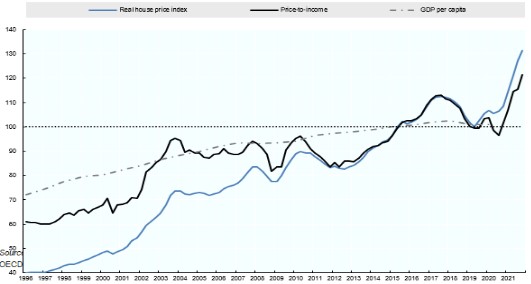“Like asses toiling under heavy burden they will bring their masters under bitter compulsion half of all their ploughed lands yield.”[1]
This translated text of the poet Tyrtaeus, captures the essence of Helotage under Spartan domination. Paul Cartledge’s view, which links the history of Sparta, fundamentally, to the class struggle between the Spartans and their Helots, identifies the complex and unique political structure of the Spartan state during the archaic and classical periods.[2] Socially, economically and militarily, the Spartan state grew out of their exploitative relationship with the Helots. This paper will provide evidence, from the extant ancient sources and modern scholarship, to confirm the correctness of Cartledge’s assertion. Spartan history is an example of a dominant culture, the ‘homoioi’, who kept a vigilant eye permanently fixed on the ‘slave like’ social strata beneath it.
Examining the Spartans and the Helots
Who were the Helots? Susan Alcock states that the Spartans conquered their neighbours on the Peloponnese, the Messenians, in the eighth and seventh centuries BC. The defeated Messenians were turned into Helots by the Spartans.[3] Pausanias gives an account of what he calls the First Messenian War and he informs his readers that his sources were Rhianus of Bene and Myron of Priene.[4] The agricultural land, and free labour, provided by Messenia, and its Helots, allowed Sparta to grow; and focus its attention on training elite hoplite soldiers. Helots worked Spartan controlled agricultural land in both Messenia and Laconia. Thucydides’ records that there were more Helots in Messenia than Laconia.[5] Figueria states that the Helot’s enforced support was the “essence of Spartan social order”.[6] Sparta became a super power within its region, with hegemony over most of its neighbours.[7]
There was another social layer separate from the homoioi and the Helots, and these were the ’perioikoi’. These people were citizens of what Forrest calls the “largely autonomous communities” in the more distant parts of Laconia and Messenia.[8] Ridley states that many of them were involved in manufacturing weapons and clothing.[9] As the Spartans themselves were exclusively taken up with military training, it makes sense that someone else must have made the hoplite’s weapons; and trusting the Helots with this role could have been perilous.
The Helots fascinate both ancient and modern historians, in that their status was different to the slaves who lived in Sparta’s contemporary Greek city states. The Spartan constitution, which was born out of the Lycurgian reforms, discouraged preoccupation with personal wealth. Helots were not the personal possessions of individual homoioi, rather, they were owned by the Spartan state. Cartledge states that modern scholars, such as “Ducat, Hodkinson and Luraghi” claim individual ownership of Helots in Sparta did exist, a claim that Cartledge denies.[10] Some commentators have drawn comparisons with the serfs in medieval Europe, because they too worked the land and fed themselves from its produce; but serfs were the property of individual land owners. Cartledge writes that the Greek word ‘heilotes’ “probably originally meant ‘captive’”.[11] Finley records that Helotage was not completely rare, and that it was also found in Thessaly, the Danubian and Black Sea areas of Greek settlement.[12] He goes on to claim that there is no “inherent reason” why Helotage should have culminated in the Spartan system.[13]
The Messenian Helots were, eventually, liberated, through the revolt of 370/69, and then the Battle of Leuctra in 371.[14] At Leuctra, the Thebans, led by Epimanondas, decisively defeated the Spartans and this ended their imperialistic power over Messene.[15] This meant that for more than three and a half centuries the Messenian Helots were under Spartan control. During this period of subjugation there were repeated attempts to revolt; most notably in the “mid-460s and in 370”.[16] Wallace makes a case for an earlier Messenian Helot revolt in the 490s; citing Plato, and the dating of the renaming of Zankle as Messene.[17] He links this to Kleomene’s activities in Arkadia in forming an Arkadian anti-Spartan League, which stirred up a Helot rebellion.[18] Pausanias offers little or no information about the Messenians during their Helotage, as if their history was put on hold for a few centuries.[19] Messenian plaques found from the sixth to the fourth centuries BC, and their similarity to Laconian plaques from the same period, have posed questions about Messenian cultural identity through this period; whether it survived distinct or was absorbed into the Laconian cultural identity.[20] There is a lack of both archaeological and literary information about the Helots and their culture. Talbert states that there is “obscurity surrounding all aspects of the lives of the Helots”.[21] Further, no Helot community has been identified and therefore excavated archaeologically.[22]
How did the class struggle between Spartan citizens and the Helots manifest, and what forms did it take? Aristotle writes that the Helots “rose repeatedly against” their masters and they were like “an enemy constantly sitting in wait”.[23] Thucydides tells his reader that the Spartans feared the Helots because of their “youth and multitude” and had “many ordinances” concerning their protection from them.[24] Thucydides records that the Lacedaemonians had the greatest number of slaves of all the Greek states, by which he means Helots in this instance.[25] Determining the exact number of Helots is notoriously difficult, although Figueria has made estimates based on the “agrarian assets of the Spartans available to support the Helots”; assessed in light of modern economic demographics.[26] Athenaeus stated that in excess of four hundred thousand slaves were present in Athens, Corinth and Aegina.[27] Figueria considers these figures to be too large to be credible. Cartledge and Talbert estimate some one hundred and seventy thousand to two hundred thousand Helots, recorded in Figueria’s table of Helot numbers; although at what date is not listed.[28] Figueria cannot see the agrarian land, the number of ‘kleroi’, feeding more than one hundred thousand Helots; prior to the great earthquake in 465. The earthquake struck Sparta and Laconia, more intensely than Messenia, and the resulting deaths lowered the Spartiate population in relation to the Helot population even further.[29] The earthquake sparked a huge Helot revolt and the Spartans, despite the enmity they felt towards Athens, were forced to call upon the Athenians for help in putting the uprising down.[30] Thucydides records that the rebelling Helots were relocated to Naupactus by the Athenians in return for laying down their weapons.[31]
Plato in his Laws, also records the Spartans at war “against the Messene” during the time of the Battle of Marathon in 490 BC; and this was why they were late for that engagement.[32] Talbert states “that other Greeks were left with an impression of disloyalty and tension” concerning the Helot’s relationship to their Spartan masters.[33] If Thucydides is to be believed, when he writes that the Spartans killed two thousand Helot soldiers, who had been fighting on their side during the Peloponnesian War, because they feared a further uprising, it is very revealing as to the extreme tension felt by the Spartans.[34] Talbert doubts the veracity of this account by Thucydides due to its irrationality, Cartledge, in contrast, suspects “Machiavellian manipulation” through propaganda to be at play here; although in a later work he defends Thucydides’ authentic coverage of the Helot massacre by the Spartan soldiers.[35] Cartledge identifies the ‘controversial’ characterisation, by Plato and Aristotle, of the Spartan’s enslavement of fellow Greeks; that Greeks were ‘unfree’ was hardly conscionable in their view.[36] Xenophon reports on the training that Spartan boys received and that they learnt to steal and spy; it has been suggested that this was preparation for controlling the Helots in Laconia and Messenia.[37] The psychological status of the Helots, in the minds of the Spartans, is further confirmed by Thucydides when he reports that Pausanias, the Spartan general, was accused of conspiring with the Helots in the fifth century.[38] Lang sees Pausanias as a scapegoat for Sparta’s double dealing, diplomatically, with Persia and the Greek states.[39]
Militarily, the Helots were important to the Spartans, despite their not infrequent uprisings and the suspicion that the Spartan citizenry felt towards them. Herodotus wrote that each Spartan hoplite was accompanied by seven Helots soldiers at the Battle of Plataea in 479 BC; totalling some thirty five thousand Helots.[40] Aristotle wrote about the Spartan’s seriously declining population, which by Leuctra in 371 numbered some one thousand fighting male citizens.[41] In 421 BC, freed helots under the command of Brasidas became known as the ‘Brasideioi’. In 413, on an expedition to Sicily, soldiers were selected from both Helots and neodamodies.[42] The neodamodies or “new men of the people” were freed helots who had served the Spartans militarily. They received land grants, often in disputed territories, for their prior service, and as reward for their readiness to serve Sparta in future engagements, as manumitted Helots. The Spartans were afraid of Helot uprisings throughout the 420s as they fought the Athenians during the Archidamian War.[43] Cawkwell points to the paucity of Spartan citizen soldiers in the force that was defeated at Leuctra, as one of the main reasons that they lost that decisive battle.[44]
Sparta was the undeniable military power in the Peloponnese, and throughout mainland Greece, for those centuries that she commanded the Messenian Helots; competing with the Athenians in the fifth and fourth centuries. After Leuctra they subsided into an isolationist hole; an irrelevancy on the world stage. The conquering and control of Messenia and the Helots, as has been shown, was their economic, social and military advantage. Fear and tension, within their society, was the price they paid for the powers they assumed through subjugation of the Helots. As the numbers of pure Spartan citizens seriously declined, the ratio of homoioi to Helot became of even greater concern. The supremely well trained Spartan hoplites were a shrinking force dwarfed by their Helot auxiliary companies. The military campaigns undertaken by Sparta were done so with an acute awareness of possible Helot uprisings. When the Helots did revolt, this, invariably, took precedence over any other external actions the Spartans may have been involved in. The history of Sparta, is, as Cartledge called it, the history of the class struggle between the Spartans and the Helots.
©Robert Hamilton
BIBLIOGRAPHY
Alcock, Susan E. “The Pseudo-History of Messenia Unplugged.” Transactions of the Philological Association 129, (1999): pp 333-341.
Aristotle. “Politics.” edited by H. Rackhan. Cambridge MA: Harvard University Press, 1944.
Brunt, P. A. “Spartan Ploicy and Strategy in the Archidamian War.” Phoenix 19, no. 4 (1965): pp 255-280.
Cartledge, Paul. “Richard Talberts Revision of the Spartan-Helot Struggle: A Reply.” Historia
40, no. 3 (1991): pp 379-381.
Cartledge, Paul, “Raising Hell? The Helot Mirage – a Personal Review”, Center for Hellenic Studies http://nrs.harvard.edu/urn-3:hul.ebook:CHS_LuraghiN_AlcockS_eds.Helots_and_Their_Masters.2003.
Cartledge, Paul. “What Have the Spartans Done for Us?: Sparta’s Contribution to Western Civilisation.” Greece and Rome 51, (2004): pp 164-179.
Cawkwell, G. L. “Agesilaus and Sparta.” The Classical Quarterll 26, no. 1 (1976): pp 62-84.
Figueira, Thomas. J. “The Demography of the Spartan Helots.” In Helots and Their Masters in Laconia and Messenia: Histories, Ideologies, Structures, edited by N. Luraghi & S. E. Alcock. Washington: Center for Hellenic Studies, Trustees for Harvard University, 2003.
Finley, M. I. Economy and Society in Ancient Greece. London: Chatto and Windus, 1981.
Forrest, W.G. A History of Sparta. New York: Norton and Company, 1969.
Herodotus. “The Histories.” edited by A.D Godley. Cambridge: Harvard University Press, 1920.
Lang, Mabel L. “Sacoegoat Pausanias.” The Classical Journal 63, no. 2 (1967): pp 79-85.
Martin, Thomas R. An Overview of Classical Greek History from Mycenae to Alexander. http://www.perseus.tufts.edu/hopper/text?doc=Perseus%3Atext%3A1999.04.0009%3Achapter%3D9%3Asection%3D2%3Asubsection%3D1.
Pausanias. “Description of Greece.” edited by Aaron J. Atsma: Theoi E-Textx Library, 2000-2011.
Plato. “Laws.” In Plato in Twelve Volumes, edited by R. G. Bury. Cambridge MA, 1967-1968.
Ridley, R.T. “The Economic Activities of the Perioikoi.” Mnemosyne 27, (1974): p 281-292.
Salapata, Gina. “Laconian and Messenian Plaques with Seated Figures: The Socio-Political Dimension.” Annual of the British School of Athens 108, (2013): pp 187-200.
Singor, H. W., “Spartan Land Lots and Helot Rents” https://openaccess.leidenuniv.nl/bitstream/handle/…/5_041_036.pdf?…1.
Talbert, Richard. J. A. “The Role of the Helots in the Class Struggle at Sparta.” Historia 38, (1989): pp 22-40.
Thucydides. “The Peloponnesian War.” edited by Thomas Hobbes. London, 1843.
Wallace, W. P. “Kleomenes, Marathon, the Helots and Arkadia.” The Journal of Hellenic Studies 74, (1954): pp 32-35.
Whitby, Michael. Sparta. New York: Routledge, 2002.
Xenophon. “Constitution of the Lacedaimonians.” In Xenophon in Seven Volumes, edited by G. W. Bowersock E. C. Marchant. Cambridge MA: Harvard University Press, 1925.
[1] H. W. Singor, “Spartan Land Lots and Helot Rents” https://openaccess.leidenuniv.nl/bitstream/handle/…/5_041_036.pdf?…1. p 31
[2] Michael Whitby, Sparta (New York: Routledge, 2002). p 229
[3] Susan E. Alcock, “The Pseudo-History of Messenia Unplugged,” Transactions of the Philological Association 129, (1999). p 333
[4] Pausanias, “Description of Greece,” ed. Aaron J. Atsma (Theoi E-Textx Library, 2000-2011). 4. 6.1
[5] Thucydides, “The Peloponnesian War,” ed. Thomas Hobbes (London: 1843). 1. 101.2
[6] Thomas. J. Figueira, “The Demography of the Spartan Helots,” in Helots and Their Masters in Laconia and Messenia: Histories, Ideologies, Structures, ed. N. Luraghi & S. E. Alcock(Washington: Center for Hellenic Studies, Trustees for Harvard University, 2003). p 195
[7] Xenophon, “Constitution of the Lacedaimonians,” in Xenophon in Seven Volumes, ed. G. W. Bowersock E. C. Marchant (Cambridge MA: Harvard University Press, 1925). 1. 1
[8] W.G Forrest, A History of Sparta (New York: Norton and Company, 1969). p 30
[9] R.T. Ridley, “The Economic Activities of the Perioikoi,” Mnemosyne 27, (1974). p 282
[10] Paul Cartledge, “Raising Hell? The Helot Mirage – a Personal Review”, Center for Hellenic Studies http://nrs.harvard.edu/urn-3:hul.ebook:CHS_LuraghiN_AlcockS_eds.Helots_and_Their_Masters.2003. 1. Status
[11] Paul Cartledge, “What Have the Spartans Done for Us?: Sparta’s Contribution to Western Civilisation,” Greece and Rome 51, (2004). p 169
[12] M. I. Finley, Economy and Society in Ancient Greece (London: Chatto and Windus, 1981). p 37
[13] Ibid. p 38
Xenophon. 1. 2
[14] Cartledge, “Raising Hell? The Helot Mirage – a Personal Review”.
[15] Alcock, “The Pseudo-History of Messenia Unplugged.” p 333
[16] Paul Cartledge, “Richard Talberts Revision of the Spartan-Helot Struggle: A Reply,” Historia
40, no. 3 (1991). p 380
[17] W. P Wallace, “Kleomenes, Marathon, the Helots and Arkadia,” The Journal of Hellenic Studies 74, (1954). p 32
[18] Ibid. pp 32-35
[19] Alcock, “The Pseudo-History of Messenia Unplugged.” p 338
[20] Gina Salapata, “Laconian and Messenian Plaques with Seated Figures: The Socio-Political Dimension,” Annual of the British School of Athens 108, (2013). p 197
[21] Richard. J. A. Talbert, “The Role of the Helots in the Class Struggle at Sparta,” Historia 38, (1989). p 22
[22] Ibid. p 23
[23] Aristotle, “Politics,” ed. H. Rackhan (Cambridge MA: Harvard University Press, 1944). 1269a 37-65
[24] Thucydides. 4. 80.3
[25] Ibid. 8. 40.2
[26] Figueira. p 196-197
[27] Ibid. p 194
[28] Ibid. p 197
[29] Ibid. p 224
[30] Thomas R. Martin, “An Overview of Classical Greek History from Mycenae to Alexander.” http://www.perseus.tufts.edu/hopper/text?doc=Perseus%3Atext%3A1999.04.0009%3Achapter%3D9%3Asection%3D2%3Asubsection%3D1. 9. 2.1
[31] Thucydides. 1. 100-103
[32] Plato, “Laws,” in Plato in Twelve Volumes, ed. R. G. Bury (Cambridge MA: 1967-1968). 698E
[33] Talbert, “The Role of the Helots in the Class Struggle at Sparta.” p 27
[34] Thucydides. 4. 80. 3-4
[35] Cartledge, “Richard Talberts Revision of the Spartan-Helot Struggle: A Reply.” p 381
Cartledge, “Raising Hell? The Helot Mirage – a Personal Review”.
[36] Cartledge, “Raising Hell? The Helot Mirage – a Personal Review”. 3. Revolt
[37] Xenophon. 2.
[38] Thucydides. 1. 131.2; 132
[39] Mabel L. Lang, “Sacoegoat Pausanias,” The Classical Journal 63, no. 2 (1967). p 80
[40] Herodotus, “The Histories,” ed. A.D Godley (Cambridge: Harvard University Press, 1920). 9. 28.2
[41] Aristotle. 2.1270a
[42] Talbert, “The Role of the Helots in the Class Struggle at Sparta.” p 25
[43] P. A. Brunt, “Spartan Ploicy and Strategy in the Archidamian War,” Phoenix 19, no. 4 (1965). p 273
[44] G. L. Cawkwell, “Agesilaus and Sparta,” The Classical Quarterll 26, no. 1 (1976). pp 82-84









